Odour trap for washing machines: what is the best choice?
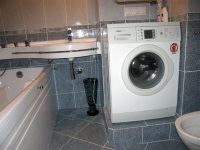
The washing machine in the bathroom is a necessary thing in the house, because it helps to save time and effort for washing. For the normal operation of the machine, it is necessary to connect it correctly to the water supply and sewerage. It is possible to install the washing machine without calling a specialist, you only need to familiarize yourself with some recommendations. If they are fully adhered to, then the installation of the washing machine will not take much time. Before installing the equipment, you should buy a siphon, because it acts as a hydraulic seal.
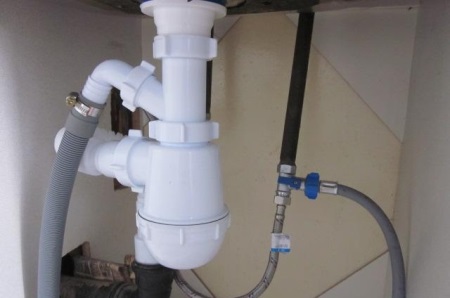
Purpose
Many people believe that the main purpose of the siphon, which is used to connect the washing machine, is to withdraw water. But this device is also designed for other purposes:
- The siphon ensures the proper operation of the drainUsing a water barrier. This allows you to forget about unpleasant odors in the room where the machine is installed. Many consumers do not pay attention to this feature until sewer odors enter their home. Replacing the siphon will help with the problem.
- The device picks up all the small debris and parts that fall into the system during the laundryand prevents them from getting into the sewer pipes. Siphon allows you to prevent clogging of drains, because it is quite problematic to perform regular cleaning of pipes. Sometimes it is simply impossible to use chemicals to clean the pipes, as you can damage the pipe material itself. Some models of washing machines have a separate compartment, which collects all the dust, hair and small objects. But if the model does not have this storage, then the main load goes entirely to the siphon.
- To facilitate the operation of the washing machine pump, the bends of the drain hose are used.

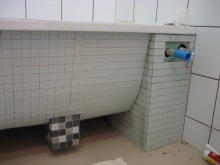

Types
The presence of a siphon ensures good water drainage, prolongs the life of the washing machine and helps to avoid possible problems that arise with sewage clogs.
The choice of a suitable siphon is quite simple, since the market of plumbing equipment provides only two types of this device.
Combined
Used in any room. It allows you to make a water outlet for the sink, and an additional spigot provides a reliable connection of the machine to the sewage system.
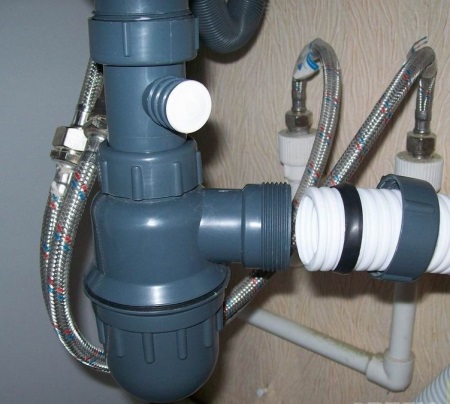
Separate (external and built-in)
- Separate siphon is often used to connect the automatic washing machine. It can be exterior or built-in.
- Outdoor siphon characterized by small dimensions, but needs more space than a built-in element, which prevents the installation of the machine near the wall. Its attachment is made to the sewage pipe with a sealing ring.
- Built-in siphon Experts usually call it "boxed", it requires less space than the external one. It is completely hidden in the wall, only an inconspicuous spigot remains. Using the built-in siphon, you can install the washing machine tight to the wall. Installation of this device is very simple, but only in advance you need to prepare a special recess in the wall. This variety is in great demand among buyers, because it carries out a hidden withdrawal of water from the automatic machine. First, the walls are lined with tile, and then the siphon is installed in the recess.
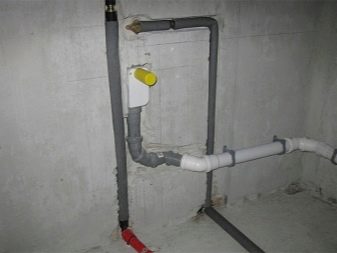
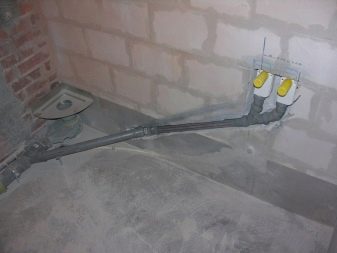
Nuances of connecting the washing machine to the drain
Before buying a certain model of automatic machine, you should first read in the manual, which water pressure should be for the operation of the product.
If the apartment is on the upper floors, it is necessary to make a check, so that the height difference and the storage tank can create the right pressure. On the lower floors such a problem is completely absent.
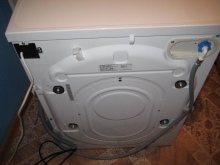
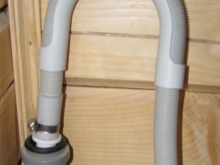
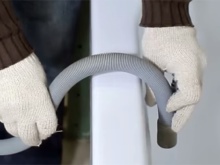
Sometimes there are difficulties in connecting the automatic machine to the drain because of its location.
There are several ways to connect it:
- directly to the bathtub;
- to the siphon, which is located under the sink or sink;
- to the sewage pipe.
To connect the dispenser directly to the bathtub, only a hose is used, as well as a holder on the side of the bathtub. These devices are sold in a set with the technique.
To connect the automatic machine drain siphon to the sink, you need to buy a model with a special spigot. To connect to the spigot, the hose from the machine is led to the spigot and secured with seals.
The last option of attachment, which is made to the sewage pipe, is more complicated, but is also often used.
When connecting the automatic machine to the siphon, you should pay attention to two nuances:
- The drain should be connected at a height of about 60 cm to reduce the load on the functioning of the pump.
- It is not recommended to extend the hose for the drain, so as not to create additional load on the pump system. If there is not enough length, you can solve this problem by using an additional sewer pipe, which is only 3.2 cm in diameter. First, the pump will push the water through the hose, and then it will flow randomly through the additional tube. If you decide to lengthen the hose, be sure to fix it at the right height, rather than throwing it on the floor, and make the right angle for good water drainage.
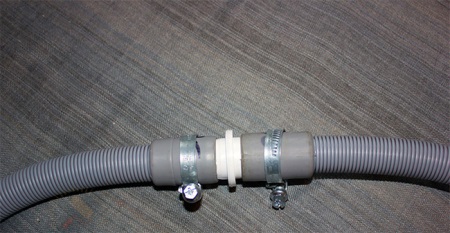
Installation steps
Connecting to sewer pipes takes several steps and depends on the material of the pipes.
If the sewer system consists of cast iron pipes, it is necessary:
- Dismantle the old siphon. Fix a special rubber adapter to the pipe, which will connect the cast iron with plastic.
- Use a special plastic adapter, which has the shape of an oblique tee with a diameter of 5 cm.
- Insert the rubber adapter, the dimensions of which are 5x2,4 cm, and make the installation of a hose for the drain.
If plastic pipes are used for sewage in the house, the connection process is greatly simplified. It is only necessary to embed a tee, and then perform all the actions, as in the attachment of the machine to the cast-iron pipes.
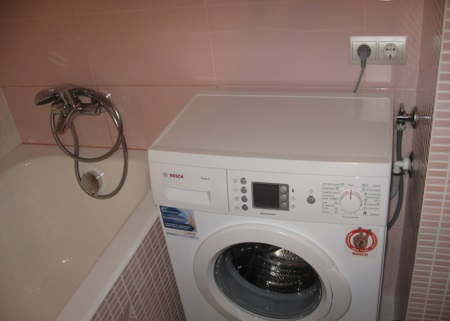
What should be considered in the process of installation, additional details
When buying a washing machine, the set already has a hose, the length of which is usually 3 m, but sometimes there are 5 m. If the length of the hose is not enough, it can be extended, but not more than 3 m, and be sure to use a polypropylene pipe with a diameter of 2 cm for the connection. It is better not to build up, but to buy a new hose of the required length. A special pump, which is responsible for draining the water from the washing machine, is one of the most expensive parts in the washing machine, so it makes sense to save it. The longer the hose, the greater the load on the pump, so its life is reduced. And also in the extended hose increases the number of clogs in the places of constriction.
When installing the washing machine, there are two additional details to consider:
- The shutoff valve is responsible for shutting off the water so that it does not flow back into the machine. Usually washing machines come with this part, but if there is no valve, you should definitely buy one. The importance of a regular valve is that once it is shut off, the water can be used for other needs. Without it, there is a great possibility of flooding the room.
- A self-tapping valve does not shut off the water. It is worth installing only in cases where the riser is not connected to other units that use water and can cause pressure drops in the water system.
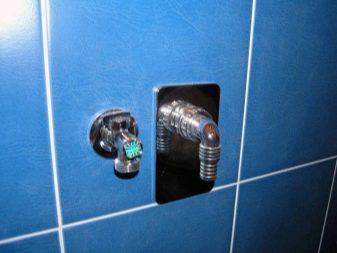
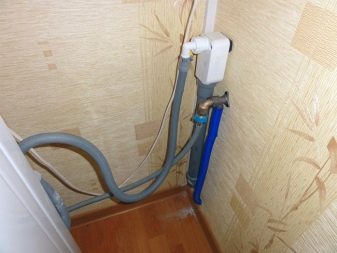
Features of the connection to the sink
To connect the automatic machine to the sink, the hose must be located at a height of about 60 cm to prevent the possibility of arbitrary leakage of water back into the machine.
It is necessary to buy a tee that is shaped like the letter "U", then in one hole is installed the hose from the technical equipment, and in the second hole - for the sink. Do not forget to use a sealant when you connect the automatic machine to the tee. Only a proper connection will guarantee a great wash without interruptions.
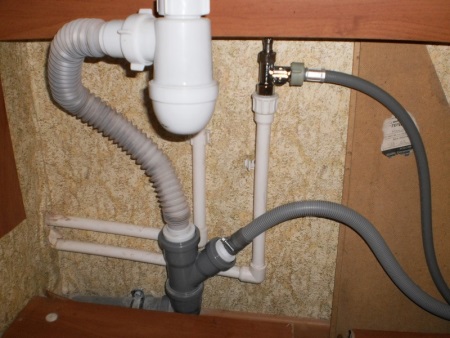
The subtleties of choosing siphons
A small variety of siphons greatly simplifies the process of choosing a product, but still, you should pay special attention to some points:
- The country of the manufacturer directly affects the quality of the product.
- The material of manufacture of the siphon, and the conditions in the room in which the washing machine will be installed.
- If the machine will be installed in the kitchen along with other equipment that consumes water, such as a dishwasher or coffee machine, the siphon must have multiple outlets.
- The siphon system must be in one piece, without cracks or other defects. Particular attention should be paid to the threads on all connections. All rubber gaskets must be the same size as the pipes.
- The technical parameters of the trap should be decisive when choosing a trap. Wear-resistant material guarantees a long service life, as well as proper operation of the entire system. The best materials for making a siphon are stainless steel or polyethylene.
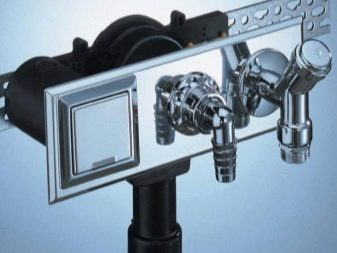
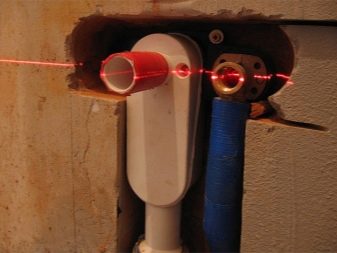





We have just started to make a renovation. We are going to do a built-in siphon.